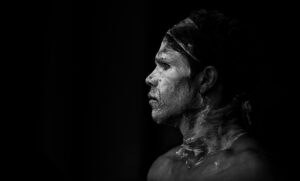‘Revenge porn’ brings to mind an image of the scorned lover sharing lewd videos of their ex. Revenge implies justice, and pornography makes it seem intentional.
But we know that isn’t the real picture of what’s going on.
The true story is that so-called revenge porn isn’t always about revenge and victims didn’t always produce the material, which is why Dr Nicola Henry of RMIT finds the term ‘image-based sexual abuse’ more fitting.
“The problem with [the term ‘revenge porn’] is that it’s very narrow, so it doesn’t capture a range of different motivations or experiences beyond that of revenge,” Nicola says.
“It minimises the harm to victims … because it likens the imagery to the production of commercial pornography. It also focuses the attention on the content of the image rather than on the abusive actions of perpetrators.”
Nicola conducted the first comprehensive survey into image-based sexual abuse in Australia. Images can be either still photographs or video content. The national online survey was completed by over 4000 participants aged between 16 and 49.
88% of participants identified as heterosexual, and 12% identified as lesbian, gay or bisexual (LGB). There was a near-even split of male and female participants (56% female, 44% male).
From the results of the survey, Nicola gleaned valuable insights into this 21st century issue.
1 in 5 Australians are victims
The most frightening finding from the survey was just how prolific this problem is. 1 in 5 surveyed participants reported being a victim of image-based abuse.
But what exactly counts as image-based sexual abuse? In Nicola’s survey, she looked at three forms:
- The non-consensual taking of a nude or sexual image.
- The non-consensual sharing of a nude or sexual image.
- Making threats to share or distribute a nude or sexual image.
The most commonly reported form? The non-consensual taking of a nude or sexual image.
“The term ‘revenge porn’ is often used to describe the non-consensual distribution of images,” Nicola says.
“What our research is really trying to do is to broaden the scope and say secretly recording intimate acts … recording people in public spaces without their awareness … they’re also really important issues that need to be addressed.”
More concerning still are how the numbers change for marginalised groups. The survey found the number of victims increased to 1 in 2 for people with disabilities and those who identified as Aboriginal or Torres Strait Islander. Age and sexuality were also factors, with the numbers changing to 1 in 3 for people aged 16 – 19 and people in the LGBTIQ (lesbian, gay, bisexual, transgender, intersex and questioning) community.
“I think what those figures tell us really does support the broader research into racial, disability and age inequality and discrimination,” Nicola tells us.
“What our research demonstrates is that image-based sexual abuse is most common among vulnerable groups.”
Psychological distress, stalking and suicide
Some people may be wondering why it matters. Is it really such a big deal?
Maybe because it’s new or because it’s so easy to do with modern technology, but a lot of people seem to underestimate the impacts for victims.
Even the police, those who are meant to protect, have been known to provide minimising advice. Deactivate your social media accounts. Block the harasser.
Image-based sexual abuse is sexual abuse. Its consequences can be just as dire.
“We found that victims of image-based sexual abuse experienced high levels of psychological distress, consistent with a diagnosis of moderate to severe depression or an anxiety disorder,” Nicola tells us.
“These are really important findings, we believe, because they demonstrate the severity of the harm that’s associated with this type of behaviour.”
She goes on to discuss cases where victims have taken their own lives. Others have been forced to take drastic actions like changing their whole identity.
“There are cases of victims being stalked … or victims not being able to get jobs because information about them is available online,” Nicola says.
“These are all the things we need to be looking at and really seeing that this is a serious problem.”

“What our research demonstrates is that image-based sexual abuse is most common among vulnerable groups.”
No one ‘asks for it’
In all forms of sexual abuse, victim blaming always seems to rear its ugly head. We’ve seen it before. A person gets raped, and the unhelpful commentary is the next to follow. What were they wearing? Why were they out alone at night? Were they drunk?
It seems victims of image-based sexual abuse are no exception to this. The survey revealed that, although the majority of participants believed image-based sexual abuse should be a crime, many still held victim- blaming attitudes.
70% agreed with the statement ‘people should know better than to take nude selfies in the first place, even if they never send them to anyone’, and 62% agreed that, if a person sends a nude or sexual image to someone, they’re at least partly responsible if it ends up online.
People who hold these beliefs may just see themselves as promoting caution. But putting responsibility on the victim won’t solve this issue.
Nicola’s research flies in the face of many previously held beliefs about revenge porn. The majority of victims did not even create the images of themselves, and a high proportion of them are from already vulnerable groups.
And even if images were created and sent willingly to someone, they don’t deserve to be punished for it.
Cybersex, sexting—it’s all just part of the digital age. Millennials even appear to be forgoing physical sex in favour of online interactions on sites like Tinder.
Instead of saying don’t take nude photos of yourself, we need to focus on the actions of the perpetrators and the consequences of their actions.
“Sending nude or sexual images is what people are doing in the 21st century with digital technologies. It’s a modern day form of flirtation and sexual engagement,” Nicola says.
“When it’s consensually and ethically done, that’s not a problem. What we should be focusing on is when a person disrespects and does something without the other person’s consent.”
A punishment to match the crime
So what can be done to make it better? The law is trying to catch up, but it’s a bit of a slow process. At the moment, only a couple of the states have specific criminal offences in place for image-based sexual abuse, and at the Federal level, traction is gaining on the issue. But even if it can be criminalised across the board, Nicola believes there’s more that can be done.
“Above all, I think victims need to have a whole range of different options available to them so that they can pursue justice according to their particular needs,” she says.
“For some people, the criminal justice system isn’t the best option … so they do need to have other options available to them.”








